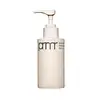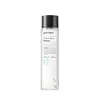What's inside
What's inside
 Key Ingredients
Key Ingredients

No key ingredients
 Benefits
Benefits

 Concerns
Concerns

 Ingredients Side-by-side
Ingredients Side-by-side

Water
Skin ConditioningGlycerin
HumectantSteartrimonium Methosulfate
Acrylates/C10-30 Alkyl Acrylate Crosspolymer
Emulsion StabilisingIsopropyl Alcohol
SolventDistearyldimonium Chloride
Limonene
PerfumingCocamidopropyl Betaine
CleansingButylene Glycol
HumectantParfum
MaskingLinalool
PerfumingSodium Chloride
MaskingBrassica Oleracea Italica Extract
AstringentSodium Benzoate
MaskingPhyllanthus Emblica Fruit Extract
HumectantBarm Extract
Skin ConditioningSeahorse Extract
Skin ConditioningFragaria Ananassa Fruit Extract
Skin ConditioningPolyglycerin-3
HumectantPhenoxyethanol
PreservativeDisodium EDTA
Water, Glycerin, Steartrimonium Methosulfate, Acrylates/C10-30 Alkyl Acrylate Crosspolymer, Isopropyl Alcohol, Distearyldimonium Chloride, Limonene, Cocamidopropyl Betaine, Butylene Glycol, Parfum, Linalool, Sodium Chloride, Brassica Oleracea Italica Extract, Sodium Benzoate, Phyllanthus Emblica Fruit Extract, Barm Extract, Seahorse Extract, Fragaria Ananassa Fruit Extract, Polyglycerin-3, Phenoxyethanol, Disodium EDTA
Water
Skin ConditioningPropanediol
SolventNelumbo Nucifera Germ Extract
Skin ConditioningNiacinamide
SmoothingGlycereth-26
HumectantGlycerin
Humectant1,2-Hexanediol
Skin ConditioningMethyl Gluceth-20
HumectantCitric Acid
BufferingXanthan Gum
EmulsifyingEthylhexylglycerin
Skin ConditioningSodium Citrate
BufferingAdenosine
Skin ConditioningDisodium EDTA
Sodium Hyaluronate
HumectantSaccharomyces Ferment
Skin ConditioningPotassium Hydroxide
BufferingAcetic Acid
BufferingIngredients Explained
These ingredients are found in both products.
Ingredients higher up in an ingredient list are typically present in a larger amount.
Disodium EDTA plays a role in making products more stable by aiding other preservatives.
It is a chelating agent, meaning it neutralizes metal ions that may be found in a product.
Disodium EDTA is a salt of edetic acid and is found to be safe in cosmetic ingredients.
Learn more about Disodium EDTAGlycerin is already naturally found in your skin. It helps moisturize and protect your skin.
A study from 2016 found glycerin to be more effective as a humectant than AHAs and hyaluronic acid.
As a humectant, it helps the skin stay hydrated by pulling moisture to your skin. The low molecular weight of glycerin allows it to pull moisture into the deeper layers of your skin.
Hydrated skin improves your skin barrier; Your skin barrier helps protect against irritants and bacteria.
Glycerin has also been found to have antimicrobial and antiviral properties. Due to these properties, glycerin is often used in wound and burn treatments.
In cosmetics, glycerin is usually derived from plants such as soybean or palm. However, it can also be sourced from animals, such as tallow or animal fat.
This ingredient is organic, colorless, odorless, and non-toxic.
Glycerin is the name for this ingredient in American English. British English uses Glycerol/Glycerine.
Learn more about GlycerinWater. It's the most common cosmetic ingredient of all. You'll usually see it at the top of ingredient lists, meaning that it makes up the largest part of the product.
So why is it so popular? Water most often acts as a solvent - this means that it helps dissolve other ingredients into the formulation.
You'll also recognize water as that liquid we all need to stay alive. If you see this, drink a glass of water. Stay hydrated!
Learn more about Water